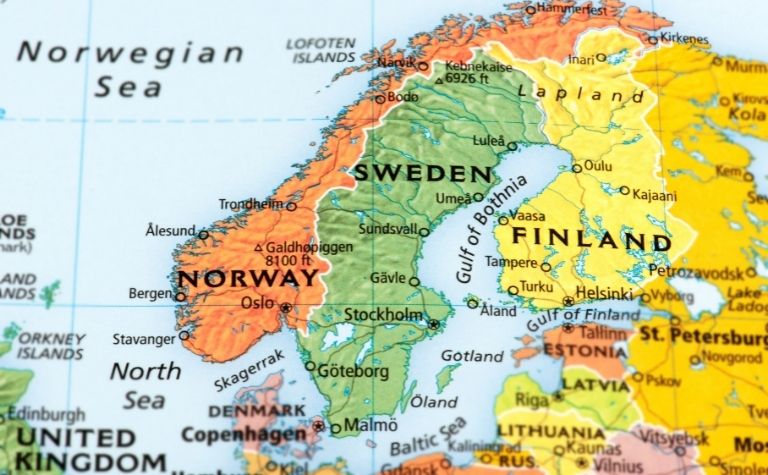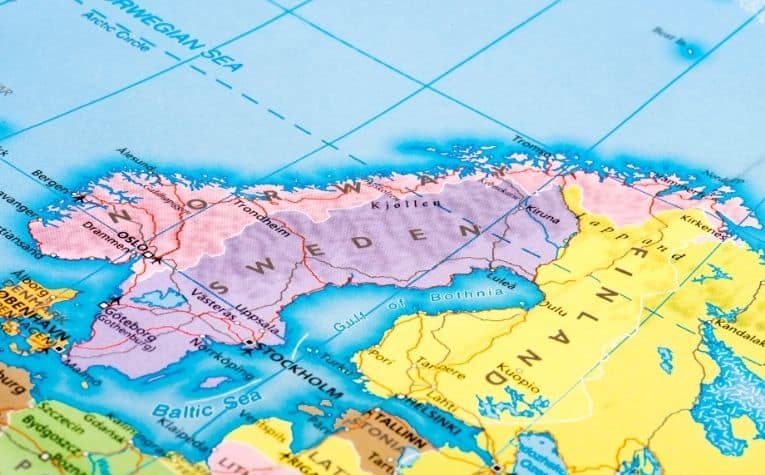Scandinavian and Dutch people inhabit roughly the same geographical neighborhood in north-western Europe.
Like any two cultures, they have their differences, but the two peoples also share many values. In light of these commonalities, how do Scandinavians view the Netherlands?
Most Scandinavians think favorably of the Netherlands. Their people originate from similar Bronze Age populations and share many common values.
Like the Netherlands, the Scandinavian countries are prosperous liberal-democratic nations with relatively open economies and egalitarian societies.
This article will discuss the historical origins of the Dutch and Scandinavian peoples and the commonalities and differences between the two national cultures.
Also, see Why Are Scandinavians So Rich? to learn more.

Dutch and Scandinavian Origins
The populations of modern-day European nations are no longer as homogenous as they used to be even half a century ago.
With increasing globalization, freer movement of people within the nations that make up the European Union, and waves of immigration into the continent, many European countries are now increasingly diverse.
The Netherlands and the Scandinavian nations of Sweden, Denmark, and Norway have all been assimilated into these larger global trends in recent decades.
However, despite this, the national cultures of these nations are still primarily informed by historical events that occurred centuries ago and movements of populations many millennia earlier.
The ancestry of many people across the region can be traced to Germanic tribes settled in Southern Scandinavia around 750 BCE: the Dutch to the Low Saxons, Frisians, Franks, and the Scandinavians to the Swedes, Danes, Norwegians, Jutes, Geats, and Angles.
While in no way culturally identical, all these groups arose out of a common Germanic Bronze Age culture.
This is why, even today, populations in Sweden, Denmark, Norway, and the Netherlands report among the highest distributions of Germanic DNA in all of Europe. [1]
In more recent centuries, these countries all experienced significant religious reform movements.
Over time, church reform and the separation of state and church made them early models of secular states and tolerant societies, unleashing their entrepreneurial potential. [2]
They were among the earliest nations to integrate into global trade networks and adapt to the new industrial age.
Both societies have highly educated and healthy populations and sell large volumes of high-value goods and services per capita to the rest of the world.
All these traits combine to make the Scandinavians and the Dutch among the wealthiest societies in the world today.
At the same time, the two societies share a strongly egalitarian ethos. So the Dutch, like the Scandinavians, have some of the most robust state support for citizens anywhere.
They provide generously for the unemployed and children and subsidize health and education so that they are available to all citizens. [3]
Today, the Scandinavian and Dutch peoples enjoy some of the highest standards of living in the world. Simultaneously, they also have relatively egalitarian societies and open economies.
Also, see Why Do Scandinavians Have Small Noses? to learn more.

Commonalities and Differences in Culture
As described above, Scandinavian and Dutch people and cultures share many common values. These grand values permeate their societies, and both cultures can be characterized as relatively liberal, egalitarian, and democratic.
Shared Values
Scandinavian and Dutch politics are both noted for their transparency, low levels of corruption, and respect for democratic norms.
Cultures of consensus building reinforce these features. Their economies are open, competitive, and forward-looking for most citizens.
At the same time, the Scandinavians and the Dutch often take the lead in the most pressing global issues, such as human rights, privacy, and environmental protection.
Of course, these norms also translate into everyday social interactions. So people in these cultures are largely respectful of differences between individuals, whether those differences are cultural, racial, gender-related, or sexual identity-related.
Both Scandinavian and Dutch people value honesty and punctuality.
Although they respect individual rights and personal space, they are less encouraging of the kind of conspicuous consumption and rule-breaking that is seen as aspirational in many parts of the world today.
Specific Similarities in the Experience of Everyday Life
Other features of Scandinavian and Dutch life seem to bear only superficial similarities. However, on closer inspection, many of these are more profound than they appear.
For instance, the two populations share many striking physical features in common.
This includes a high percentage of people with blonde hair and light eyes and similar proportions of people with red hair.
These similarities are not merely skin-deep; they are based on the shared common ancestry of the two people.
Similarly, the fact that the Dutch and Scandinavians are among the tallest people in the world speaks to both their common ancestry and the high levels of health and nutrition they enjoy.
While their politics, culture, and society can all be traced to similar historical developments, these too, manifest in concrete aspects of everyday life.
These nations are all great places to cycle, for instance. They are also some of the safest places for women and minorities of all kinds to live.
Their high degree of integration into the global economy and robust infrastructures mean that many people across the region speak English and enjoy common elements of popular culture.
Finally, geography also contributes to cultural similarities among Dutch and Scandinavian people. The best example of this is their shared love for herring.
Minor Differences
Of course, Dutch and Scandinavian societies do have their differences.
Perhaps, the most remarkable of these is the combination of geographic and demographic features that makes the Netherlands much more densely populated than the Scandinavian nations. [4]
While both societies are among the most liberal in the world, on a spectrum, the Dutch tend to be more liberal than Scandinavians.
In contrast, the Scandinavians tend to be more socially conservative.
There are also many minor differences in culture, too numerous to list. For instance, the Scandinavians like their herring pickled, whereas the Dutch prefer theirs fresh.
Also, see Why Do Scandinavians Have Colorful Houses? to learn more.

Are the Benelux Countries Part of Scandinavia?
The Benelux countries are not part of Scandinavia. The Benelux countries comprise Belgium, the Netherlands, and Luxemburg.
Scandinavian countries, on the other hand, refer to a group of nations that includes Sweden, Denmark, and Norway.
The slightly broader ” Nordic ” umbrella includes the Scandinavian countries Iceland and Finland. [5]
Conclusion
Scandinavians share many common traits with the Dutch, and most Scandinavians look favorably to the Netherlands.
Also, see How Are Scandinavians Viewed In Europe? to learn more.
References:
[1] Source
[2] Source
[3] Source
[4] Source
[5] Source
